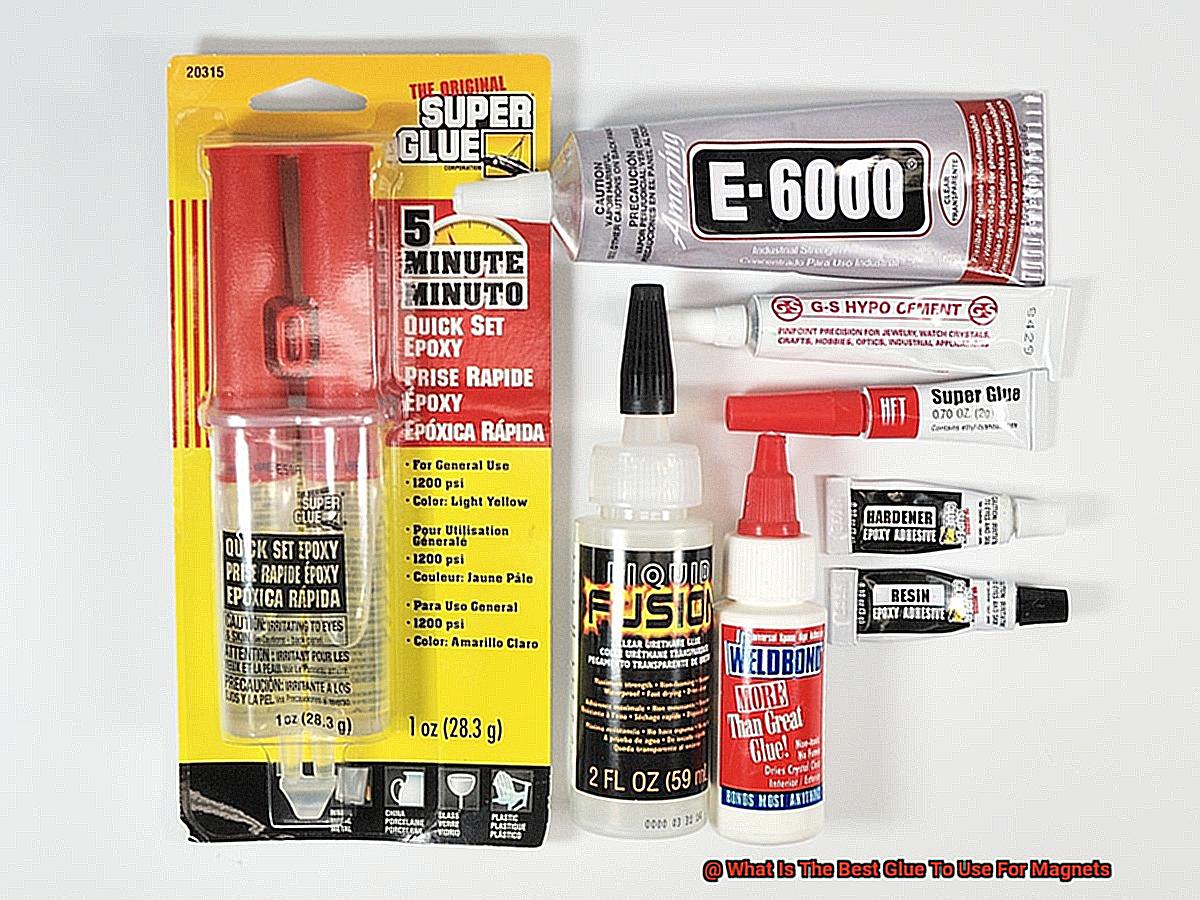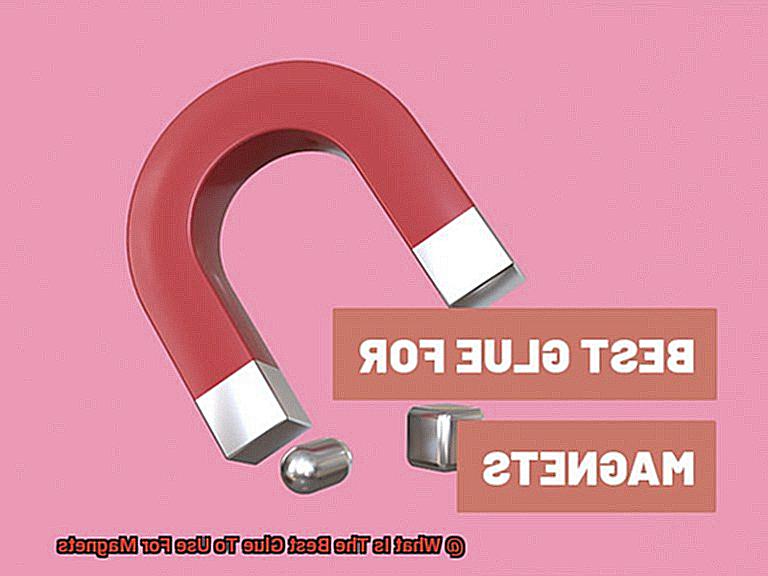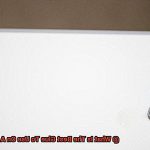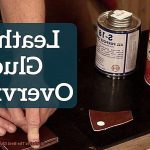Ever been caught in a sticky situation where your trusty magnets lose their grip, leaving you with a jumble of metal pieces instead of a tidy collection? Don’t despair. We’re here to spill the secrets on how to reunite your magnificent magnets using the most extraordinary adhesive known to mankind.
Magnets have a magical way of captivating us and adding wonder to our lives. Whether they’re holding up colorful artwork on the fridge, organizing tools in the workshop, or aiding in groundbreaking inventions, magnets play an essential role in our daily routines. But keeping those magnets securely attached can be a daunting task without the right glue.
In this captivating blog post, we’re diving headfirst into the fascinating world of magnets and adhesives. Buckle up as we embark on a journey to discover the best glue for magnets – an innovative solution that will banish your magnet-separation woes forever.
So, what factors should you consider when selecting the perfect adhesive for your magnets? We’ll explore crucial aspects like strength, durability, compatibility, and versatility that will help you find the ideal formula for keeping your magnets firmly joined.
Prepare to be amazed as we unveil the most reliable and effective choices for sticking magnets to metal surfaces, crafting intricate DIY projects, or tackling industrial applications. We’ll delve into mesmerizing adhesive options such as epoxy, superglue, and specialist magnet adhesives – revealing their remarkable strengths and surprising weaknesses.
Bid farewell to mediocrity and embrace the captivating world of magnet adhesives as we guide you through a maze of glue options. Say goodbye to magnet separation tragedies once and for all.
Get ready for an adhesive adventure like no other because when it comes to magnets, we’re here to ensure your bond is unbreakable.
Types of Glue for Magnets
Contents
- 1 Types of Glue for Magnets
- 2 Advantages and Disadvantages of Epoxy Glue
- 3 Advantages and Disadvantages of Super Glue
- 4 Advantages and Disadvantages of Silicone-Based Adhesives
- 5 Considerations When Choosing a Glue for Magnets
- 6 Pre-Glued Magnets: Pros and Cons
- 7 Testing the Strength and Durability of the Adhesive
- 8 Conclusion
Are you prepared to unlock the secrets of magnet adhesion? Before you embark on your adhesive journey, let’s delve into the diverse landscape of glue options available for bonding magnets. Each glue possesses its own unique advantages and disadvantages. So, grab your lab coats and safety goggles as we unravel the mysteries of magnet gluing.
Epoxy Glue: The Indomitable Bond
In the realm of magnet gluing, epoxy resin reigns supreme. This adhesive superhero forms an unyielding bond that can withstand the harshest conditions. Heat, moisture, and chemicals are mere trifles to its mighty grip. However, one must exercise caution when handling this powerful glue, for its application can be a messy affair. Patience is also required, as epoxy glue requires a longer curing time.
Super Glue: The Swift and Sturdy Ally
In need of a rapid solution? Fear not, for super glue comes to your aid with lightning-fast bonding capabilities. This adhesive ally swiftly establishes a robust connection between magnets and surfaces. Yet, beware the potential pitfalls. Not all super glues are compatible with every magnet type or surface material. Certain formulations may harm magnets or undermine their magnetic properties. Prior research is essential to ensure a harmonious union between super glue and magnets.
Silicone Adhesive: The Agile Companion
When flexibility is paramount, silicone adhesive stands ready as your trusted companion. Its adaptable nature enables it to endure vibrations and fluctuations in temperature with remarkable grace. This makes silicone adhesive ideal for magnets destined to brave challenging environments. However, it’s important to note that silicone adhesive may not possess the same level of strength as epoxy or super glue. Choose wisely based on your project’s requirements.

Liquid Nails or Construction Adhesive: The Stalwart Protector
For endeavors of the most demanding nature, liquid nails or construction adhesive is a steadfast ally. Designed for heavy-duty applications, this glue provides an unyielding bond that withstands the test of time. However, this formidable adhesive may necessitate clamping or support during the curing process. Patience is a virtue when working with liquid nails or construction adhesive, as they require adequate time to solidify their connection.
Magnetic Adhesive Sheets: The Effortless Enabler
If ease and convenience are your top priorities, magnetic adhesive sheets offer a hassle-free solution. These innovative sheets come equipped with adhesive backing, simplifying the attachment of magnets to various surfaces. A mere peel and stick action bring magnets and surfaces together in perfect harmony. However, it’s important to note that the bond achieved with magnetic adhesive sheets may not possess the same robustness as other glue types.
Advantages and Disadvantages of Epoxy Glue
Today, we delve into the enchanting world of epoxy glue and its unique advantages and disadvantages for bonding magnets. So grab your safety goggles and let’s dive in.
Advantages:
- Strong Bond – Epoxy glue is the Hercules of adhesives, known for its exceptional strength and ability to create a bond that can withstand the forces of nature. When it comes to bonding magnets, you need something that can hold them in place like a superhero. Epoxy glue is up for the challenge, creating a bond as secure as Fort Knox.
- Versatility – Like a chameleon of adhesives, epoxy glue can be used on a wide range of materials, from metal to plastic to wood. So whether you’re working on a metal magnet project or a wooden masterpiece, epoxy glue has got your back.
- Temperature Resistance – Imagine your magnet creation basking in the sun or enduring extreme temperature changes without breaking a sweat. Well, epoxy glue can make that dream a reality. With its exceptional resistance to high temperatures, it’s the perfect companion for magnets that might face some heat.
- Chemical Resistance – Life is full of surprises, including encounters with solvents, oils, and other substances. But fear not. Epoxy glue is here to save the day with its resistance to many chemicals. So go ahead and let your magnets dance with whatever substances they desire – epoxy glue will keep them safe and sound.
Disadvantages:
- Mixing Required – Now, I know we all love a good chemistry experiment, but when it comes to epoxy glue, mixing can be a bit time-consuming. You’ll need to carefully measure and combine two parts before applying the glue. So grab your lab coat and be prepared for a little extra effort.
- Cure Time – Patience is a virtue, my friends, and it’s especially true when it comes to epoxy glue. Unlike other glues that work their magic in a snap, epoxy glue takes its time to fully cure and reach its maximum strength. So if you’re in a hurry to showcase your magnet masterpiece, you might need to plan ahead.
Advantages and Disadvantages of Super Glue
Today, we will delve into the advantages and disadvantages of this incredible adhesive when it comes to bonding magnets. Brace yourselves for a journey through the realms of quick and strong bonds, versatility, ease of use, but also the challenges of inflexibility, removal difficulties, limited gap-filling abilities, and sensitivity to moisture.
Let’s begin with the advantages. Picture this: you have two magnets that need to be bonded urgently. Enter super glue, the superhero of adhesives. With its incredible ability to form an instant and robust bond upon contact, it’s like a magical potion that hardens in the blink of an eye. Perfect for those small repairs or time-sensitive projects.
But wait, there’s more. Super glue is not just a one-trick pony. Its versatility knows no bounds as it can bond an impressive array of materials. Whether you’re working with plastics, metals, ceramics, rubber, or even fabrics, super glue will be your trusty companion. From fixing broken fridge magnets to unleashing your creativity in craft projects, super glue has got you covered.
Now let’s talk about user-friendliness. Super glue comes in sleek tubes or bottles with applicator tips, allowing for precise and controlled application. No messy drips or excess amounts here. Its liquid consistency makes spreading it evenly on surfaces a breeze. Say goodbye to adhesive mishaps.
As we explore the flip side of super glue, we encounter its disadvantages. Brace yourselves for the first challenge: inflexibility. Once super glue dries and forms a bond, it becomes rigid. This lack of flexibility can be a bane in situations where the bonded magnets need to withstand bending or movement. If you require something more malleable or joints that demand some wiggle room, super glue may not be your best bet.
Removing super glue can be quite the feat. Its formidable bond means that it’s not easily undone if applied accidentally or if disassembly becomes necessary. Special solvents or acetone might be required to dissolve the glue, but caution is advised as they can potentially damage the surface or material being treated. A delicate balancing act, indeed.
Advantages and Disadvantages of Silicone-Based Adhesives
These adhesive marvels offer a range of advantages that make them a go-to choice for many applications. However, like any superhero, they also have their weaknesses. Let’s take a closer look at the advantages and disadvantages of silicone-based adhesives, so you can make an informed decision for your bonding needs.
Advantages:
- Unyielding bonding strength: Silicone-based adhesives are the epitome of strength and reliability. When it comes to attaching magnets to various surfaces, these adhesives create an unbreakable bond that ensures your magnets stay securely in place. No more worries about slipping or detachment.
- Flexibility that defies limits: Picture a contortionist effortlessly maneuvering through complex poses. That’s exactly how silicone-based adhesives handle vibrations, shocks, and external forces. Their high degree of flexibility allows them to withstand any challenge without compromising their bonding strength. Whether it’s a moving object or a tension-filled environment, these adhesives rise to the occasion.
- Temperature resistance that braves extremes: From scorching heat to freezing cold, silicone-based adhesives fear no temperature extreme. They remain unfazed by the harshest conditions, making them ideal for applications with unpredictable temperature swings. When it comes to enduring the elements, these adhesives are true champions.
- Defying water and moisture: Moisture may be the enemy of many adhesives, but not silicone-based ones. These super-powered adhesives possess exceptional water and moisture resistance, ensuring they hold up even in wet or humid environments. Bid farewell to adhesive deterioration caused by water exposure.
- Chemical warriors: In the battle against various chemicals, silicone-based adhesives emerge victorious. They exhibit remarkable resistance to solvents, oils, acids, and other substances that could compromise their effectiveness. When magnets encounter different elements, these adhesives provide the ultimate protection.

Disadvantages:
The wait for greatness: While silicone-based adhesives possess incredible strength, they require patience to reach their full potential. Compared to other adhesives, they have a longer curing time. Once applied, it may take several hours or even days for the adhesive to fully cure and achieve its maximum bonding strength. Remember, greatness takes time.
Considerations When Choosing a Glue for Magnets
The quest for the perfect glue for your magnets may seem daunting, but fret not. As an esteemed expert in the realm of magnet adhesion, I am here to guide you through the labyrinth of considerations that will lead you to adhesive triumph.
Let us begin our journey by unraveling the mysteries of magnets themselves. Neodymium, ceramic, flexible – these are just a few of the captivating types of magnets that exist. Each possesses its own unique properties, demanding specific adhesives for optimal bonding. For those mighty neodymium magnets, renowned for their magnetic strength, only a powerful adhesive can withstand their magnetic allure and secure an unbreakable bond.
Now, let us turn our attention to the materials at hand. Magnets can manifest in a myriad of forms – metal, plastic, rubber, and more. It is crucial to select a glue that harmonizes with both the magnet and the material it longs to embrace. If your magnetic masterpiece requires a union between magnet and metal, seek out an adhesive that possesses metal-bonding prowess.
Consider also the destiny that awaits your final creation. Shall your magnets confront the elements, bravely facing moisture or extreme temperatures? If so, your adhesive ally must possess unwavering resistance to these environmental challenges. Seek out glues with the power of waterproof or heat-resistant properties to ensure your bond emerges victorious against nature’s wrath.
Strength and flexibility are paramount attributes for any successful bond. Yet, some glues bestow strength at the expense of movement and adaptability. Should your magnets yearn for adjustability or face vibrations and impacts, a flexible adhesive shall be your trusty companion. It shall guard against compromise while allowing your magnets to dance freely.
Practicality shall not be overlooked on our quest. Ease of application and drying time are critical factors in this adhesive odyssey. Avoid those concoctions that demand meticulous mixing or prolong the drying process, for who has the patience to wait when destiny beckons? Seek swift and effortless bonding solutions that align with your magnetic ambitions.
Lastly, we must not disregard the spectral realm of odors and toxicity. In the confines of a poorly ventilated workspace or for those with sensitivities, it is vital to select a glue that will not provoke dizziness or unleash unpleasant reactions. Choose an adhesive that emits noxious fumes not, for the air should be as fresh as your magnetic creations.
Pre-Glued Magnets: Pros and Cons
Embarking on a magnetic adhesive journey has led us to discover the wonders of finding the perfect glue for magnets. But what if we could skip the glue altogether? Enter pre-glued magnets, the stick-and-go solution. However, as with any innovation, there are always trade-offs. Join me as we delve into the pros and cons of using pre-glued magnets to determine if they truly live up to their adhesive allure.
Pros of Pre-Glued Magnets:
Convenience:
Picture this: a project deadline looming, and you need to stick magnets onto various surfaces in a flash. Fear not, for pre-glued magnets are here to save the day. With adhesive already expertly applied, these magnets eliminate the need for hunting down the perfect glue or adhesive. Simply peel off the backing and stick them wherever your heart desires. Convenience, thy name is pre-glued magnet.
Time-saving:
In the realm of productivity, time reigns supreme. And pre-glued magnets understand this all too well. Bid adieu to waiting for glue to dry or set; with pre-glued magnets, you can immediately put them to use once applied. This time-saver allows you to navigate through your projects swiftly and efficiently.
Neat Application:
We all strive for that polished and professional look in our projects, don’t we? Well, fret no more, for pre-glued magnets are here to grant your wishes. The adhesive on these magnetic marvels is meticulously distributed, resulting in a clean and pristine application. Whether it’s an intricate craft project or a meticulous office organization endeavor, pre-glued magnets effortlessly add that touch of finesse.
Versatility:
Pre-glued magnets are akin to shape-shifters; they effortlessly adapt to any surface. Be it metal, wood, plastic, or even glass, these magnets adhere seamlessly to a wide array of materials. So whether you’re unleashing your creativity in DIY masterpieces or seeking to conquer the organization game, pre-glued magnets are always up for the challenge.
Testing the Strength and Durability of the Adhesive
In this section, we’re diving deep into the captivating world of testing the strength and durability of adhesive used for magnets. Get ready to witness the incredible measures taken to ensure that our magnets stay firmly attached.
The Bond That Holds:
Battling External Forces:
Our magnets are warriors, battling against vibrations, impacts, and temperature changes in their everyday lives. But can their adhesive counterparts keep up? Through rigorous testing, we evaluate whether the adhesive can withstand these external forces without surrendering its grip on the magnet.
A Testament of Time:
Durability is the unsung hero of adhesive testing. We want our magnetic adhesives to withstand the test of time, to remain as steadfast as ever. By subjecting them to a battery of conditions and assessing their performance over time, we can ensure that they maintain their bond with unwavering loyalty.
Testing Methods:
Now that we understand the significance of testing, let’s venture into the realm of techniques used to assess adhesive strength and durability. Manufacturers employ a variety of methods such as pull-off tests, shear tests, and accelerated aging tests to scrutinize the performance of adhesives. These tests determine whether the adhesive meets stringent standards and provides unwavering bonding for our magnets.
Considering Real-Life Challenges:
It’s not just about applying force and measuring results; it’s about simulating real-life conditions that magnets may encounter. Moisture, chemicals, and even the relentless onslaught of UV radiation are all factors to be considered. By subjecting the adhesive to these challenges, we can ensure that it remains unyielding, no matter what the world throws its way.
Conclusion
When it comes to finding the best glue for magnets, there are a few options that stand out above the rest. One of the top choices is epoxy adhesive. This powerful adhesive creates a strong and durable bond between magnets and various surfaces. Its ability to withstand both heat and moisture makes it an ideal choice for long-lasting magnet applications.
Another excellent option is cyanoacrylate glue, also known as super glue. This fast-acting adhesive forms an instant bond between magnets and surfaces, providing quick and reliable results. It’s perfect for smaller magnet projects or when you need a strong hold in a short amount of time.
If you’re looking for something specifically designed for magnets, consider using magnetic adhesive. This specialized glue contains tiny iron particles that enhance its magnetic properties, allowing magnets to stick securely to surfaces without any additional support. It’s a convenient solution for magnet installations or crafts that require maximum magnetic strength.
No matter which type of glue you choose, it’s important to ensure that the surfaces are clean and dry before applying the adhesive. Additionally, following the manufacturer’s instructions regarding curing time and application techniques will help you achieve optimal results.
In conclusion, when it comes to gluing magnets, epoxy adhesive, cyanoacrylate glue, and magnetic adhesive are among the best options available. Each offers unique benefits depending on your specific needs.





